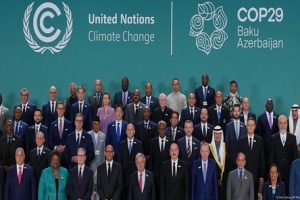
Today is Ethiopians transition to a new year, 2017. As they welcome the New Year they do not only start a new number but also move from an old, difficult season to a new favorable weather which is the spring season. This has been the reality for centuries as the calendar keeps on counting the days the seasons appear on their usual sequence. But this year seems to have come with a new trend that enables the people to transition from not only season to season but from the traditional life style that damages the natural environment to a one that nurtures and protects it.
Throughout the rainy summer season, Ethiopians have been busy planting tree seedlings in billions under the Green Legacy Initiative.
For the last 6 years, the people across the nation have transplanted about 40 billion seedlings. This plays a significant role in protecting the environment and the ecosystem there by preventing the impacts of climate change like flooding, drought and other natural disasters.
Ethiopia has traditionally experienced a variety of natural catastrophes, including droughts, floods, and landslides, all of which have a substantial impact on agriculture and livelihoods. Several natural disasters occurred in Ethiopia during 2016. The extent of the floods’ impact, including relocation and destruction of public infrastructure and crops, was well observed.
According to the IOM Ethiopia Crisis Response Plan 2024, Ethiopia is still dealing with many humanitarian emergencies caused by climate change, disease outbreaks, and high commodity and food prices as a result of inflation, conflict, and violence in several regions influenced by the neighboring Sudan conflict.
Ethiopia has been observing La Niña-induced droughts for decades and continues to do so. Ethiopia is at risk in terms of hazard and exposure, susceptibility, and coping capability due to rising temperatures, variable rainfall and unpredictability of seasonal rain, increased drought occurrences, and other severe events. Furthermore, the extended drought has had a significant impact on pastoralist and agro-pastoralist groups, disrupting their customary seasonal movement patterns.
The most significant issue here is what were the challenges and successes of Ethiopia’s 2016 year? What are the projected outcomes of these problems for the upcoming 2017 Ethiopian year?
Ethiopian Disaster Risk Management Commission Commissioner Ambassador Shiferaw Teklemariam told The Ethiopian Herald: “As we begin the new year of 2017, there are so many positive and unpleasant memories from 2016. However, it is time to make the decision to go on with a fresh perspective for the upcoming year. In particular, we should take three key steps to decrease risk and risk-related activities.”
First and foremost, the year should be one in which we can build our reputation for humanity, maintain our culture of mutual assistance, and demonstrate our collective support for our residents. This signifies that Ethiopians should maintain their humanity regardless of circumstances. Second, we must establish our peace. Making peace enables more effective development efforts and assistance for people in need. As a result, the development of peace enables more thorough work. The third goal is to ensure sustainable development. Building peace may assure long-term growth while also providing support and assistance to those in need.
He also added that dependency and seeking assistance should be another and most critical thing we should eliminate from our country for the next Ethiopian New Year in 2017. The government considers reliance to be an act that diminishes the country’s honor and human dignity. So, in 2017, it is critical to recognize that dependency is a major issue and an evil activity.
As a result, the coming year should be one in which we resolve to stand on our own two feet and stop relying on others. As a result, the year should be one in which everyone strives to be the finest version of himself or herself and an era in which we join with a common goal and vision to improve our country, he noted.
Although man-made issues can be minimized, natural disasters cannot be controlled or avoided entirely. So, when an occurrence affects someone or an area, it is critical to aid one another. Furthermore, the government has directed that each region prepares for and builds the ability to deal with natural catastrophes on its own. Furthermore, it should be a year for Ethiopians both at home and abroad to prepare for understanding and solidarity in the face of natural disasters. It should be a year in which we work to assure food security and aid for drought-prone areas, he explained.
In reality, in the 2016 Ethiopian calendar, Ethiopia had a number of both man-made and natural calamities that had a substantial influence on its people and development. Droughts are common across the country, especially in the east and south. Droughts can cause food and water shortages for millions of people. The extreme drought in 2015-2016, worsened by El Niño, caused a humanitarian disaster.
Landslides were also an issue in 2016. For example, heavy rains cause flooding and landslides in various sections of the country. In Ethiopia, landslides pose a serious geological risk, particularly in steep and hilly locations. They can be caused by a number of events, including high rainfall, deforestation, soil erosion, and seismic activity.
This has an influence on the number of deaths and injuries. Landslides can result in fatalities and injuries, especially in rural regions where villages are located on or near unstable slopes. It also ruins houses and infrastructure, displacing families and towns. The loss of roads, bridges, and agricultural land can have long-term economic consequences, affecting livelihoods and market access.
Hence, it is important to take mitigation measures in the coming 2017. It is especially important to continue the already reforestation tasks because promoting tree planting and reforestation can help stabilize soil and reduce the risk of landslides. Furthermore, it is important to apply sustainable agricultural practices, such as terracing and contour farming, which can help reduce soil erosion.
Currently, the government is providing up-to-date information to boost early warning systems and reduce natural disasters. As a result, building early warning systems for heavy rainfall can aid communities in preparing for probable landslides.
According to him, however, climate change and environmental-related challenges are the primary causes of natural disasters but in 2016, the country gained experience in environmental care and protection. The Green Legacy initiative program, initiated by Prime Minister Abiy Ahmed, has produced positive and encouraging outcomes.
In addition to the saplings planted each year, Ethiopia intended to plant 600 million tree seedlings in a single day, planting around 615 million saplings. This shows that if we work together, we can change the mindset and environment of consumerism. Therefore, we should take care of our environment in 2017.
Addressing the challenges posed by both natural and man-made problems in Ethiopia requires a multifaceted approach that includes conflict resolution, sustainable development techniques, and adequate disaster response strategies. As a result, “I wish that everyone learns that the environment is everything and cares for the seedlings planted in 2017, where we improve environmental and soil conservation activities. It is also necessary to improve the outcomes of the green legacy initiative. Besides, stakeholders also should support the government of Ethiopia to make those people who need help for various reasons be independent and self-reliant, not dependent.
BY EPHREM ANDARGACHEW
THE ETHIOPIAN HERALD WEDNESDAY 11 SEPTEMBER 2024





